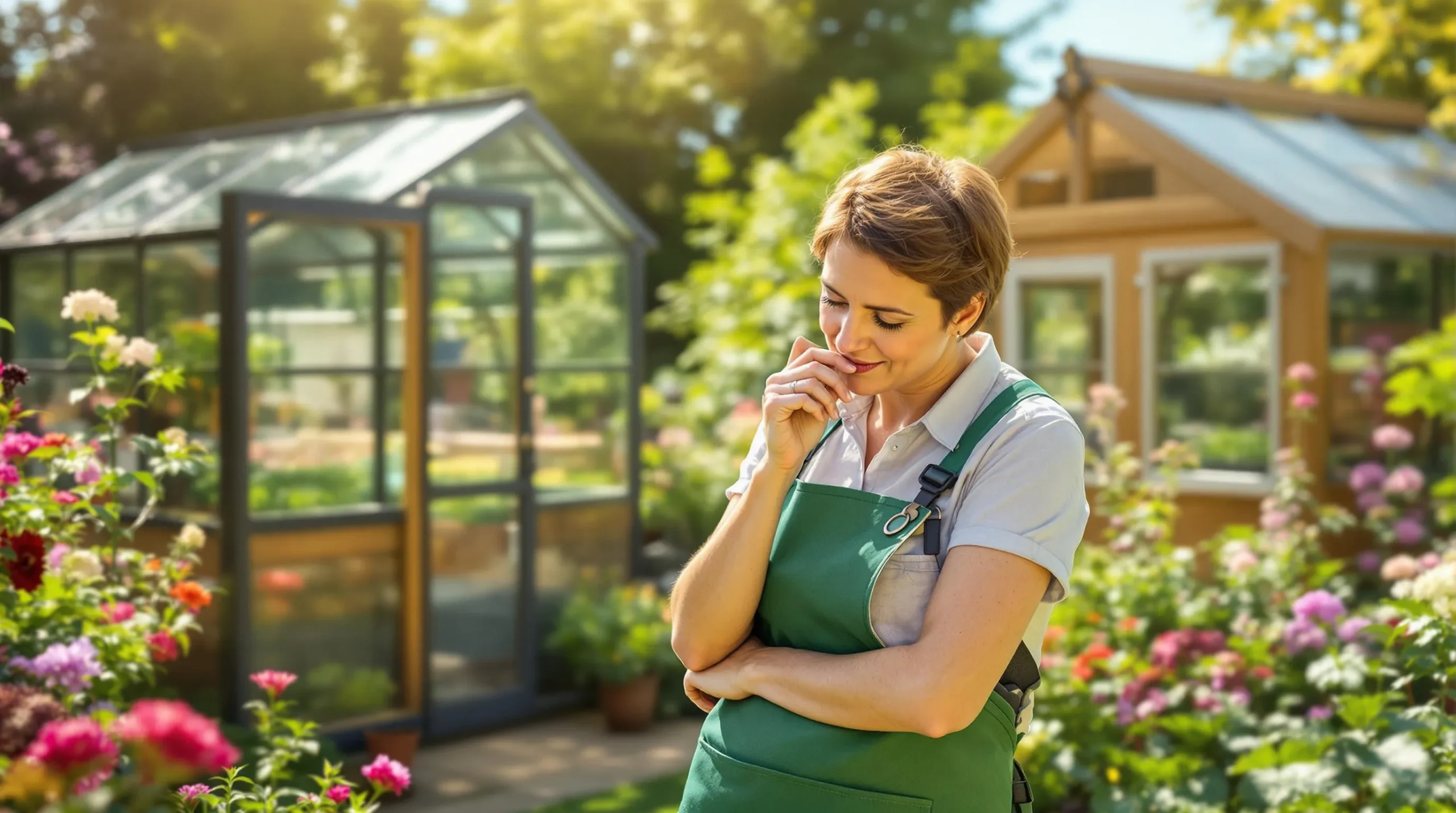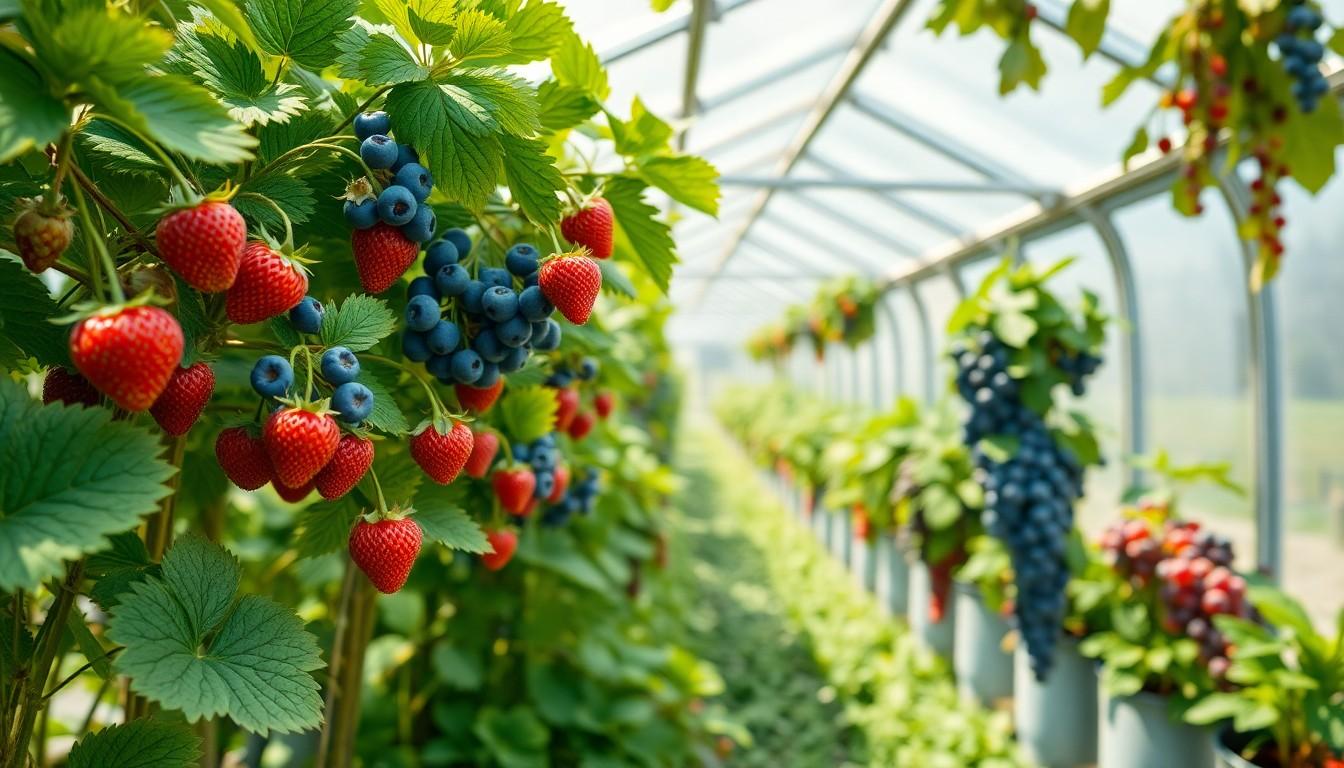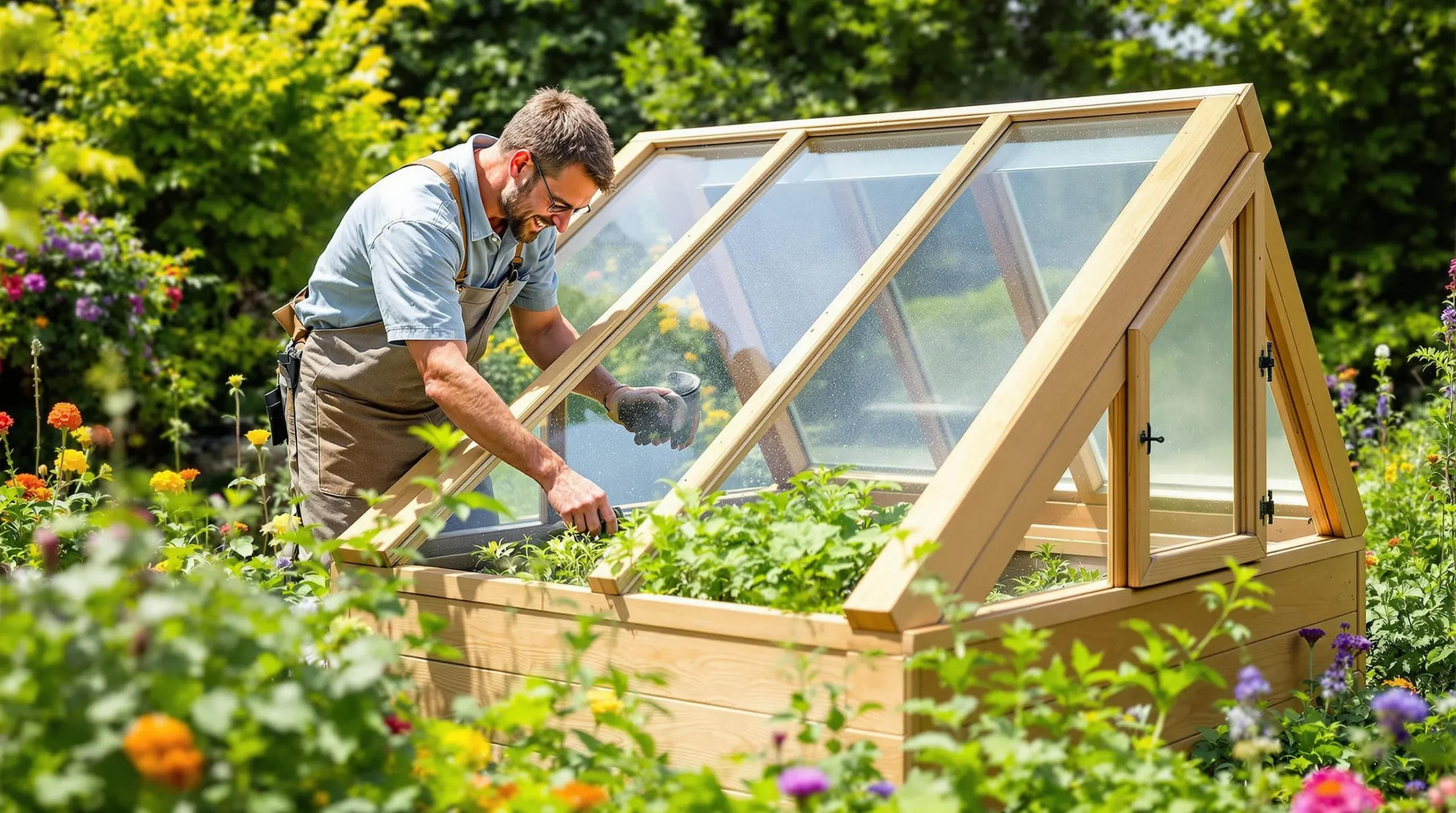
How to Choose Your First Greenhouse: A Complete Beginner’s Guide for 2025
Learn how to choose your perfect first greenhouse with our expert guide. Discover size, materials, and features to extend your growing season by 2-3 months.

Want to get the most out of your polycarbonate greenhouse? With its ability to transmit up to 90% of natural light while offering excellent insulation and weather resistance, a polycarbonate greenhouse provides the perfect environment for growing a wide range of plants.
Whether you’re an experienced gardener or just starting out, these modern structures offer unique benefits that support healthy plant growth. The twin-wall panels diffuse sunlight evenly, preventing scorching while maintaining a stable temperature inside. This makes polycarbonate greenhouses ideal for year-round gardening—but to achieve the best results, it’s important to choose plants that will thrive in this environment.
Polycarbonate greenhouses offer excellent UV protection, shielding plants from harmful radiation while ensuring they receive the right amount of light for healthy growth. Their impact-resistant panels are designed to withstand harsh weather conditions, providing durability and reliability in various climates.
The lightweight construction makes installation and maintenance easier compared to traditional glass structures, while the energy-efficient design helps maintain a stable growing environment by retaining heat and reducing the need for additional heating. These greenhouses are also a cost-effective alternative to glass, offering long-term savings. With durable, long-lasting materials, polycarbonate structures require fewer replacements, making them a smart investment for any gardener.
Polycarbonate greenhouses create optimal growing conditions for vegetables through consistent light diffusion and temperature control. The twin-wall panels protect plants while allowing 90% of natural light transmission for healthy growth.
Leafy vegetables thrive in polycarbonate greenhouses due to the filtered light and regulated moisture levels. Here are top performers:
| Vegetable Type | Light Requirements | Temperature Range (°C) |
|---|---|---|
| Leafy Greens | Partial to Full | 15-20 |
| Fruiting Crops | Full Light | 20-25 |

Polycarbonate greenhouses provide the perfect setting for growing fruits and berries by regulating temperature and evenly diffusing light. Their twin-wall design helps maintain a stable climate while shielding plants from harsh weather, ensuring healthy growth in all seasons.
Polycarbonate greenhouses enable continuous fruit production throughout the seasons:
| Fruit Type | Optimal Temperature | Humidity Range | Growing Season |
|---|---|---|---|
| Strawberries | 18-22°C | 60-70% | Spring-Autumn |
| Blueberries | 20-25°C | 65-75% | Year-round |
| Raspberries | 20-25°C | 60-65% | Summer-Autumn |
Each season requires specific adjustments for optimal fruit production:
Spring:
Summer:
Autumn:

A polycarbonate greenhouse lets you enjoy fresh, flavourful herbs and microgreens all year round. Its controlled environment provides the perfect conditions for delicate herbs to flourish and fast-growing microgreens to thrive, giving you a steady supply of homegrown ingredients in any season.
Polycarbonate greenhouses offer ideal conditions for growing these essential culinary herbs:
| Herb | Temperature Range | Light Requirement | Soil Type |
|---|---|---|---|
| Basil | 18-24°C | Full sun | Well-drained |
| Parsley | 15-20°C | Partial shade | Moist, rich |
| Mint | 15-21°C | Adaptable | Moist |
| Oregano | 16-21°C | Full sun | Sandy, well-drained |
These fast-growing options produce harvests in 2-4 weeks:
| Variety | Days to Harvest | Growing Method | Light Level |
|---|---|---|---|
| Radish Microgreens | 7-10 days | Dense sowing | Medium |
| Pea Shoots | 10-14 days | Dense sowing | Medium-high |
| Baby Spinach | 21-28 days | Row planting | Medium |
| Baby Lettuce | 21-30 days | Row planting | Medium-low |

Growing plants in a polycarbonate greenhouse requires precise environmental control for optimal growth. Here’s how to manage key growing conditions effectively.
Polycarbonate greenhouses maintain temperatures between 18-24°C (65-75°F) during the day for most plants. Opening vents at 20°C prevents overheating in summer months. Here’s how to control temperature:
| Environmental Factor | Optimal Range | Monitoring Frequency |
|---|---|---|
| Day Temperature | 18-24°C | 3x daily |
| Night Temperature | 13-18°C | 2x daily |
| Humidity | 50-70% | 2x daily |
| Ventilation | 15-30 mins | Morning/Evening |
A polycarbonate greenhouse makes it easy to grow a wide range of plants all year round. Its excellent light transmission, insulation, and durability create the perfect environment for everything from leafy greens to fruits and herbs.
By managing temperature, humidity, and ventilation, you can ensure your plants thrive in any season. These versatile structures let you enjoy fresh produce and vibrant plants no matter the weather.
Success comes down to choosing the right plants and maintaining ideal growing conditions. With a well-maintained polycarbonate greenhouse, you’ll have a productive and flourishing garden all year long.
Polycarbonate greenhouses transmit up to 90% of natural light whilst protecting plants from harsh weather. Their twin-wall panels evenly diffuse sunlight and provide excellent insulation, creating an optimal environment for year-round plant cultivation. They’re also more durable and cost-effective than traditional glass structures.
Leafy greens like lettuce, spinach, and Swiss chard thrive particularly well. Fruiting vegetables such as tomatoes, peppers, cucumbers, and aubergines also flourish due to the controlled environment. The consistent light diffusion and temperature control create ideal growing conditions for most vegetable varieties.
Yes, fruits like strawberries, blueberries, raspberries, grapes, and figs grow excellently in polycarbonate greenhouses. The controlled temperature and humidity levels create perfect conditions for fruit development. With proper care and maintenance, you can achieve successful yields throughout the growing season.
Common herbs like basil, parsley, mint, and oregano grow well year-round. Microgreens and baby leaf crops are particularly successful due to the controlled environment. These plants benefit from the greenhouse’s stable temperature and humidity levels, producing fresh herbs continuously.
The optimal daytime temperature range is 18-24°C (65-75°F). To prevent overheating, use shade cloth and position plants strategically. Regular ventilation is crucial for maintaining proper temperature levels. Monitor and adjust conditions daily for best results.
Use daily venting and fans for air circulation. Adjust watering schedules based on humidity readings and ensure proper air flow throughout the greenhouse. Good ventilation helps prevent disease and promotes healthy plant growth. Monitor humidity levels regularly and adjust accordingly.
With proper maintenance, polycarbonate panels typically last 10-15 years. They’re UV-resistant and highly durable, though they may show some yellowing over time. Regular cleaning and proper installation help extend their lifespan significantly.
Polycarbonate offers several advantages over glass, including better insulation, lighter weight, and greater impact resistance. It’s more cost-effective and easier to install, though it may scratch more easily than glass. The material provides excellent light diffusion for optimal plant growth.

Learn how to choose your perfect first greenhouse with our expert guide. Discover size, materials, and features to extend your growing season by 2-3 months.

Learn how to make a cold frame to extend your growing season, protect plants in winter, and grow seedlings all year. Simple, cost-effective, and DIY-friendly!